 Image by AzamKamolov from Pixabay Image by AzamKamolov from Pixabay It is already March, and I cannot believe it. I am shocked at how quickly this year is already going by. I hope that everyone has had a good start to their year so far. I have been doing well, besides battling a couple rounds of a cold that seemed to hit the family one at a time, making it seem to take forever. But all of that aside, it has been a very good start to the year. I would love to know how your year has been. I have been getting back into reading a lot this year. I have not reviewed every book that I have read and listened to, but I have reviewed a couple of them; I think it is three right now, and I plan to continue reviewing. I am also considering doing reviews on BookTok and Bookstagram. The reason for this is that it seems that more people get their reviews from there than anywhere else anymore, and because I have had four people ask me for my booktok or bookstagram link (only one was family, and it wasn’t quite worded like that for him) in the past month. If I choose to do this, the blog will still be my number one priority. I have put too many years into the blog to give up on it now. I have been writing for this blog for over ten years, and though it has never made me any money and readers rarely write me on the blog itself (usually it is on social media), I am very attached to it. I would love to use the blog itself to do the videos, but I guess people do not respond to that very well at all. I guess they prefer the face-to-face (which isn’t face-to-face at all) part of it. Which I am not sure about. For one thing, I would have to film in and around my home, and I am not one to want my face and my life all over the internet. Needless to say, I am not sure that I want to go this route yet, but if I do, or if you want to see what I already have, you are more than welcome to follow me on Instagram or TikTok to your hearts content. I will keep you informed on whether or not I choose to do this. Anyway, I wanted to put up a post about something and had no idea what, so this is what you get today: some ramblings from me. Welcome to my life; it is a weird place to live.
0 Comments
 Image by Nino Souza Nino from Pixabay Image by Nino Souza Nino from Pixabay Once again we find ourselves at a new year. However, we also find ourselves in a new state of mind. The last few years have been very trying on many people and it still is for many others. This is really not a secret to anyone. Shockingly, or not so shockingly, I lost my desire to write and review books. It has always been something I loved and enjoyed, but life hit and I stopped. But I am back to enjoying my books. This is in many ways thanks to my children and my sister and mother, but mostly it is because of my husband. I really missed writing and reading and he could see that, but he also decided to give me the space that I needed to get back to it and to support me. I think that without him by my side, listening to me prattle on about all the books I read in the past two years, especially the ones that I hated, really got me back to wanting to read and write again. I am so happy to have this support and so blessed to have family that care about me and my interests so much. I am hoping that you will all be seeing more writing from me this year and that I will be hearing from you all much more than I have in the past couple of years. It is a new year, and I am ready for a new start. Let the year begin, let the adventure begin. Join me on a year filled with reading, writing, and a new twist, artwork. Check out my art page, new to the blog, and follow me on social media. Thank you everyone. Keep enjoying reading, and if you find you can't, find something to keeps you grounded.  Image by Oleksandr Pidvalnyi from Pixabay Image by Oleksandr Pidvalnyi from Pixabay Today is the 31st of December, the last day of 2022. When midnight arrives, it will be a new year. Despite the last couple of years, I, like so many others, hope that the new year will be filled with so many blessings and so much joy. This is the start of a new chapter. As I look back on the year that is leaving, I think about all of the beautiful and amazing things that have made it such a wonderful year. Yes, there were moments that were not the best, but there were so many things that made this past year so extremely wonderful. I hope that this next year is amazing and beautiful for everyone reading this, and that you are all blessed with joy and comfort. Let's raise a glass to the new year. Happy New Year to everyone!  Image by Peter Olexa from Pixabay Image by Peter Olexa from Pixabay There is something wonderful about being able to get back to something that you love after being away from it for a very long time. I feel as though I have been in a rut with my reading and my writing for the past three years or so. In fact, I know that I have. Something happened in my life three years ago that threw off my creative spark. But I am so excited to feel as if it is actually coming back. I know that this might seem like an odd thing to say, but since I have been able to read, I have found a good amount of things that I devour and pour myself into. Since my kids have been born, I have read somewhere close to 52 books a year, or one book a week. and wrote more than I ever posted in this blog. But last year I only managed to read 12 books, and most of them were books that I read to my children. I am sad to say that I did not manage to read more than that last year. As this year is quickly coming to a close, I did not meet my usual goal, but I have read 32 books and am on the brink of finishing another. This is in great part thanks to my sister and mother challenging me to participate in the 2022 Spine and Leaf Book Challenge. I am so thankful for this. By being presented with a challenge, I was able to break out of the reading slump. I am so excited to do the 2023 Reading Challenge, also by Spine and Leaf. I invite anyone who would like to join me. Now that my original blog is mine again, I am so excited to get back to writing. I have been wanting to for a while. I have also entered a piece into a contest in the hopes of becoming a published author or at least getting some writing pointers. That said, I am still trying to figure out what I want to write about for the blog and beyond. But the feeling of wanting to is something I am so excited about. I haven’t felt like I wanted to in such a long time. I hope that I will have more to post very soon, not just reviews, though I plan to start reviewing books again very soon. I hope that many of my old readers will be pleased to read my new material and see how my writing has evolved over the years.I am grateful for those who have come by and read some of my writing, and for those who have come back again and again even though there was no new writing to read. There will be one soon. I promise. I am so happy to be back. 
Matthew Gregory Lewis, also known as “Monk” Lewis, was an English novelist and playwright famous for his Gothic novel “The Monk.” Lewis was born July 9, 1775. His father was England’s deputy Secretary at War. At the age of eight, he attended Westminster School and Christ Church, Oxford at age fifteen.
In 1791, Lewis spent the summer months in Paris, France and the fall of 1792 until the end of the winter of 1793 traveling Germany, where he had the privilege of meeting Johann Wolfgang Von Goethe. In 1794, Lewis obtained his Bachelor of Arts. In 1791, his mother and father permanently separated. His father hoped that he would become a politician, but his mother supported his desire to become a novelist and playwright. In 1792, Lewis completed his first play “The East Indian”; he completed his second, “The Twins,” in 1794. During a stay in Holland, Lewis completed his novel “The Monk.” It took him approximately ten weeks to write and was filled with murder and ghosts. In 1796, at the age of 20, Lewis published “The Monk” which was an immediate success. Because of its many horrific subjects - murder, incest, ghosts, and mob violence - it was published under Lewis’ initials only. His novel also became a turning point for Gothic literature because it focused more on the horrifying than the romantic. Lewis served as a Member of Parliament in the House of Commons from 1796-1802. Despite his position, Lewis continued to write. Between 1796 and 1812, Lewis wrote 18 separate plays, published and performed at the London Theater. His success as a playwright lead to his being called the most popular playwright of his age. “The Castle Spectre” is regarded as his most popular play. “The Monk,” despite being extremely popular, was harshly criticized. Lewis announced he was the author and added his name to the novel for the second printing. Samuel Taylor Coleridge, a poet, personally attacked Lewis’ work in a review posted in Critical Review in February 1797. Coleridge thought the novel was blasphemous and claimed he felt it was inappropriate reading. He was not alone. Thomas James Mathis threatened that legal action could be taken against Lewis because some of the Biblical references could be considered sacrilegious. After all of the criticism hit its peak, Lewis revised the novel, removing several passages, before its fourth printing. In 1812, Lewis’ father passed away, leaving his fortune and estates to Lewis. Lewis stopped writing professionally after the death of his father. Along with his fortune, Lewis also inherited a large estate in Jamaica and the home of nearly 500 slaves. Concerned about the slaves’ living situations and overall well-being, Lewis took a voyage to Jamaica to visit the estate. He arrived January 1, 1816. In August of the same year, Lewis visited Lord Byron and Percy Shelley in Geneva. After 14 months touring Italy, Lewis sailed for Jamaica once again in November 1817. On the return voyage, Lewis contracted yellow fever and died on May 16, 1818. He was buried at sea. After his death, in 1834, “The Journal of a West Indian Proprietor” was published and is said to be a triumph that attests to his humane nature. Works Cited Anon. N. d. “Matthew Gregory Lewis Facts.” Biography. Retrieved August 23, 2017 <http://biography.yourdictionary.com/matthew-gregory-lewis>. Anon. N. d. “The Monk by Matthew Lewis.” The British Library. Retrieved August 23, 2017 <http://www.bl.uk/collection-items/the-monk-by-matthew-lewis>. "Matthew Gregory Lewis". Encyclopædia Britannica. Encyclopædia Britannica Online. Encyclopædia Britannica Inc., 2017. Web. 13 Aug. 2017 <https://www.britannica.com/biography/Matthew-Gregory-Lewis>. 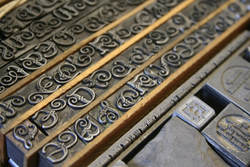
Johannes Gutenberg invented the first printing press in Maines, Germany sometime between 1440 and 1450. His invention increased Europe's book count from the thousands to the millions.
Despite the success of the printing press, Johannes Gutenberg lost all of his assets to his business partner, Johann Furst, in 1455. Furst continued the business with his employee, Peter Schöffer, who later became his son-in-law. Despite the fact that the printing press was invented in Maines, Germany, the city never flourished in the book trade. Anton Koberger lived in Nürnberg and operated internationally. At the height of his career, he owned 24 printing presses. His success in the book trade lead to him being the first business man to become a member of his town council. Printing quickly spread to other countries including Sweden, Denmark, and Russia. Printing did not actually take hold in Russia until 1552 because the first printer to move there was murdered before he was able to set up shop. The printing press made its way to Italy in 1462-63 through a Benedictine monastery near Rome. Konrad Sweynheim and Arnold Pannartz, two German printers, moved to Rome in 1467. The church there highly encouraged the printing of inexpensive books. Before long the larger cities in Italy had become centers for printing and publishing. In 1500 Venice had approximately 150 presses. Nicolas Jenson, a typographer in Venice, perfected the Roman typeface in the year 1470. Aldus Manuthius began printing in 1490 and later invented both the pocket edition and the publisher's logo. In 1470, the rector and librarian of Sorbonne, in Paris, France, invited three German printers to set up shop at the university. The scholars chose which books to print and set the typeset, usually the Roman typeface. When the Renaissance came to France in 1500, France became the leader of book production in Europe. It was also during this time frame that France consolidated the Aldine book type, books printed in a compact and inexpensive manner. The reign of Frances I, 1515-47, became known as the Golden Age of French typography. Francis I had a personal interest in the printing of books and was a friend and patron of Robert Estienne, a prominent name in the French world of typography. In 1530, Francis I ordered Estienne to donate a copy of every book that he printed to the royal library. In this way, he also founded the very first copyright library. The first press established in Spain was at Valencia in 1473. England was slow to embrace the printing press, the first one did not reach England until 1476. By 1500 there was a total of five printers in England, all stationed in London and all were foreigners. Richard III restricted how much trade foreigners were allowed to do in England, with the exception of the book trade. He wanted to encourage the development of books in England. In 1485, one year after Richard III restricted foreigners' trading, Henry VII appointed Peter Actors, a foreigner from Savoy, as the royal stationer and allowed him to import books. The lack of restrictions on the book trade made England a profitable area for printers. The free trade ended, however, and native stationers were protected by Henry VIII, who in 1523, 1529, and 1534, enacted regulations on foreign craftsmen and stopped the free importation of books. Until 1535, roughly one third of those in the book trade were natives to England. William Caxton introduced printing in England. He was taught the art of printing in Cologne in 1471-72 before setting up a press in Bruges in 1474. Edward IV encouraged him to return to England where he received royal patronage under Richard III and Henry VII. Caxton was not a very good printer, however, the fact that he printed in English rather than Latin, thereby helping to shape the language, made him a valuable printer in England. Before his death, William Caxton printed roughly 90 books, 74 of which were printed in the English language. After his death, Caxton's press was carried on by his assistant, Wynkyn de Worde of Alsace. Unlike Caxton, Worde printed a wide variety of religious books, school books, and collections of popular folk tales, instead of expensive books for the rich. He preferred to print smaller volumes that the common people could afford. Like Caxton, he also published primarily in English. Richard Pynson was also a prominent name in England's printing. Pynson was from Normandy and began his career as a printer in 1492. In 1508 he became the King's printer, and in 1509, he became the first to use Roman type in England. In 1522 he published the first English book on arithmetic. BIBLIOGRAPHY: "history of publishing".Encyclopdia Britannica. Encyclopdia Britannica Online. Encyclopdia Britannica Inc., 2017. Web. 21 May. 2017 <https://www.britannica.com/topic/publishing>. 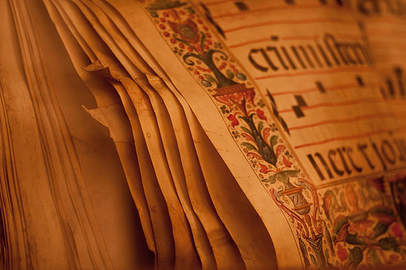
Most of us have learned about the creation of the printing press by Johannes Gutenberg when we were in school. However, is that really the beginning of published works? Johannes Gutenberg didn't invent the printing press until 1440-50, so how were books and other works published before the printing press?
Before the invention of writing, information and stories were shared through word-of-mouth or oral telling. You might associate the concept with the children's game of "telephone" or plain old gossiping. However, this was once the best was to communicate. Some people's primary jobs were to orally communicate with others, they were known as bards and criers. A bard was a story teller while a crier, usually working for and under the protection of the king, would shout out the news for all to hear. The earliest known written works consisted of cuneiform characters, wedge shaped characters, carved onto clay tablets roughly five inches in length. These were used by the Sumerians, Babylonians, Assyrians, and Hittites. A scribe would use a stylus to carve characters into the clay while it was still wet. Once the characters were formed and the tablet complete, it would be baked in a kiln, a large oven used for baking clay, or left out in the sun to dry. Once Aramaic language, and the alphebet, grew in popularity during the 6th century B. C., the papyrus roll became a more popular option. The papyrus roll originated in Ancient Egypt and resembled paper. The papyrus is a reedy plant that grows in the Nile Valley. Strips of papyrus pith were pulled from the plant and laid out at right angles from each other before being glued together. The roll closely resembled paper, was cream colored, and was used with ink and either a reed pen or a brush. Due to the fragile nature on the papyrus roll, many scrolls were destroyed over time, however, some were preserved in dryer climates. The Chinese were the third to produce an extensive amount of written works. It is believed that the Chinese were producing books as early as 1300 B. C. Their books were constructed of wood and bamboo strips, bound together using cords. The Greeks also used the papyrus roll and passed their knowledge and techniques to the Romans. Alexander the Great played a pivotal role in establishing books in the Greek culture. He also played a monumental role in the developement of the first libraries, including the Library of Alexandria. Unfortunately, the majority of Greek texts presumed to have been in the Library of Alexandria were destroyed. School texts survived best due to their wide disbursement throughout the land. The Romans built libraries similar to those of the Greeks, but they kept manscripts written in both Greek and Latin. They progressed beyond libraries by developing the book trade and inventing bookshops. Book ownership quickly spread throughout the upper classes of society. Having a private library became a badge of social standing. The bigger your collection, the higher your station. The Romans needed a way to produce a vast amount of books quickly in order to meet the rise in demand. They utilized slave labor in order to produce multiple copies at a time. It also helped to lower the costs so that families of a more moderate income were able to purchase books. Slave copiests would have a book dictated to them; this allowed publishers to turn out up to 30 copies at a time. The publishers also had the choice of what to publish. By being able to choose, they were able to pay authors, choose size and format, and set sales prices to turn a profit. After the papyrus roll came the Codex, during the Christian era. The Codex construction more closely resembled our modern books and quickly replaced the papyrus roll. A codex consisted of leaves that were folded and bound together on one side. This allowed readers to more easily locate their spot and allowed both sides of the leaf to be written on. This also allowed for longer works to be published. For instance, when using the papyrus roll, the book of Matthew from the New Testament took an entire roll, while the codex could hold the first four books of the New Testament. As the codex grew in popularity, a search for better materials began. This is when vellum and parchment entered the scene. Vellum is ultimately a finer version of parchment. Parchment is a form of leather, a greatly refined form of leather, made from cattle, goat, or sheep skin; vellum was usually made from calf skin. The skin would be stretched tight using a frame and scraped to remove any hair or flesh still attached to the skin. When the skin was ready, it would be whitened using chalk and smoothed using a pumice stone. Now it was ready to be cut into large sheets. Vellum and parchment were more flexible and durable than papyrus and could be cut into larger sheets. Unlike papyrus, it could also be written on both sides. Despite its advantages, the codex and the papyrus roll co-existed for approximately 400 years. The fall of the roman Empire in the 5th century brought with it great consequences for the world of books. Marauders and barbarians became a common part of life and they threatened the very existence of the written word. Thankfully, a refuge rose up in the form of monasteries. Monasteries quickly gained charge of books. They both created and housed books in their own libraries. Due to the large amount of books being stored there, it became impossible to copy the books once the sun went down because of the increased risk of fires. This fact slowed the production of books considerably. The medieval books, like the ones stored in the various monasteries, were in codex form and utilized either vellum or parchment. However, by the 5th century, paper was also a common medium. Medieval books were reknowned for their beautiful, intricate illustrations which were also considered to have perfect coloring. The medieval books were also the original model for our current books. During the 12th century, universities arose in the larger cities and helped to increase the production of books by hiring stationers to help meet the rise in demand. They also regulated the content, size, and price of the books that they printed. Humanistic and vernacular books also rose in demand, increasing an interest in classical literature amoung the common people. Vernacular literature is any book written in the language of the common peoples. These stories arose during the medieval era, mostly by word of mouth and anonymous authors. By the 14th and 15th centuries, the vernacular books became much more common, many of the anonymous authors finally making it into print, and new authors writing for the first time. With the rise of vernacular literature, the education level of the lower classes also rose. Books soon became known as a tradeable item and paper began to replace vellum. BIBLIOGRAPHY: "history of publishing".Encyclopdia Britannica. Encyclopdia Britannica Online. Encyclopdia Britannica Inc., 2017. Web. 21 May. 2017 <https://www.britannica.com/topic/publishing>.  We all have experiences that we know will stay with us for the rest of our lives. Some of these experiences last mere moments, while others can encompass entire years. In the summer of 2007, I found myself volunteering at a place called Eagles Summit Ranch. At that time, I was unaware that those fleeting months would leave a lasting impression on me, but now I know. I know that summer will remain with me for a very long time. I was sixteen, living outside of a small town, in the beautiful Colorado countryside. It was one of those places where everyone knew each other. Being so far away from town made it difficult for me to meet up with my friends during the summer months. Instead, I would spend a lot of time helping out at my grandparents’ restaurant. I enjoyed working at the restaurant. The whole store was rich with rustic charm, while still being comfortable and welcoming. Early in the morning, a few customers, usually locals, would arrive, before the sun had truly come up. They would drink their coffee and tell stories. I loved hearing all of the stories, especially my grandpa’s. One day, during the early morning, a new couple came in for breakfast. I quickly learned that their names were John and Mary and that they were working at Eagles Summit Ranch. At that time, I didn’t know much about the ranch and most of my knowledge came from riding the school bus past it twice a day. I knew that I loved the location most of all. Eagles Summit Ranch was nestled between two hills and had a beautiful grassy field, which was kind of uncommon in the area. I did not know how big it was or who owned it, mostly I knew that it was one of the few places I liked to look at as we drove by, and that they had a big sign by one of the entrances that read: Eagles Summit Ranch. Over time, I grew to know and like John and Mary. They were one of the happy couples who I looked forward to seeing in the restaurant. Mary was always happy and so full of life. She was easy to talk to, even though I am sure that I wasn’t always the greatest conversationalist. I never have been and teens can be hard to talk to from time to time. If I ever truly bothered her though with my random silly banter, she never let on. John was a jovial man who told a lot of jokes and had a laugh that lifted your spirits if you were down in the dumps. I also loved that he was one of the few people whose jokes I actually understood and found funny. He would always ask me about school and boys, which made me laugh. I don’t remember exactly how it happened, but once summer began, I began volunteering at Eagles Summit Ranch whenever I could. I would walk to my grandparent’s restaurant, across the street, and wait for John and Mary, or sometimes another Eagles Summit Ranch employee, and after breakfast, I would ride over to the ranch with them. At the beginning of summer there wasn’t much to the ranch. A small cabin served as a gathering area, where we would often take breaks or have lunch. Behind this was the office. Basically the office was exactly what it sounds like, an office. I didn’t spend much time there. Down a small dirt drive, past where I could see from the school bus windows, there was a large metal structure being built. I came to think of this as a giant garage, but that was not the only purpose it served. On top of another small hill, a large house, which I referred to as the main house, was also under construction. Being sixteen, I was given small jobs, such as picking up trash, sweeping away sawdust, or helping bring supplies from one place to another. Occasionally I would help make lunch or do some small tasks in the office. Once, I merely watched two younger kids for the day since there was nothing else for me to do that day. It was a rather fun day, all things told. Though the jobs I was assigned were not extremely important in the grand scheme of things, I loved being there and being a part of everything that was going on. I quickly grew to like everyone who worked there. One man, whom everyone called Bert, knew a lot about the horses and even let me help him with some of the jobs that he did, as long as they were not too dangerous. He also had three daughters that came by, one of which was rather close to my own age, and we got along great. I liked helping Brian and Daphne, another couple who worked there, as well. Brian was a quiet man and worked near the giant metal structure most of the time. Though he didn’t say much, he was nice and let me help when I could. Daphne was very friendly as well and taught me a lot of little things that I still use today, such as how to make a ton of sweet tea in a hurry and how to wash grease off of my hands quickly and without turning the bathroom sink into an unsightly mess. Every so often, a large group of volunteers would come up and help at the ranch. Many of these parties came from other states, such as Texas. I helped them when they came, as if I was a part of the group as well, and in a way I suppose I was. With one group, we dug large holes every so many feet, so that they large metal fence posts could be buried. This was a beautiful fence, and I loved the way that it looked when it was all finished. I also learned many useful and interesting things while I was there. Some of which I was unable to try, such as using the wet saw to cut the tile, or lay the hard wood flooring, but I learned a lot from watching and talking to the people doing those jobs, usually I was there to hand them something when they needed it, but not always. I learned how to glue down flooring, stain wood, lay tile, and even caulk windows. It was fun and if I ever need to know these things in the future, I have always wanted to flip a house, I will be very thankful for the knowledge. By the end of summer, the main house was finished and the ranch was ready. Over the summer I had learned that Eagles Summit Ranch was not just another ranch in the area, but a place for soldiers and their families to learn how to take their injuries and make something better out of it. A place where they could find help and healing. I had met Dave Roever and his family over the summer months. Mr. Roever served in the Vietnam War as a young man and had suffered extensive burns after a white phosphorous grenade exploded in his hand. After returning home, his injuries and the way he was treated, inspired him to found the Roever Foundation, which Eagles Summit Ranch was a part of. The Roever Foundation seeks to help soldiers, and their families, who have suffered injuries, physical and otherwise, by teaching them how to speak publicly about their experiences. However, this is not their only function. They also provide scholarships to students, both foreign and domestic, who are seeking degrees in a wide variety of subjects. They have also constructed hospitals and provided medical supplies and care in Vietnam. Dave Roever has been invited to speak in many high schools across the nation. During his speech, he addresses the usual topics of drugs, alcohol, and sex as well as teaches about hope and faith. Though I did not have the privilege to see him speak in my own high school, my father told me that he saw him speak when he was a teenager in high school. At the end of the summer, the ranch had an opening event that was also a welcoming event for the first visitors. I was invited along with my grandparents. I helped set up for the event. The event was held in the large metal building at the far end of the ranch. I was honored to meet the men and women and was moved by their bravery as they each told some of their stories. Once school resumed it became impractical for me to continue volunteering my time. I was saddened about no longer being able to come to the ranch every day, but in truth, with the main house complete, there was not much left that I could have helped with anyway, and I had plenty to do with school. I still helped out at my grandparents’ restaurant on the weekends and was able to see many of the people I had grown to know there. I grew to love Eagles Summit Ranch and all the people that worked there and volunteered there. All of the people that joined together for the common goal of helping others. I still get updates on the ranch from time to time and follow Dave Roever and the Roever Foundation on social media. I will carry with me all of the memories that I made there and all of the wonderful things that I learned there. Not only the practical things, like laying tile, but also what I learned about others and about myself. If you would like to learn more about Dave Roever, The Roever Foundation, or Eagles Summit Ranch, you can visit their website at www.roeverfoundation.org or visit them on Facebook at www.facebook.com/Dave-Roever-152322355947/ or on Twitter at @daveroever. You may also like to read one of Dave’s books about his time in Vietnam, I did and it helped me to better understand Eagles Summit Ranch and how needed programs like this are. 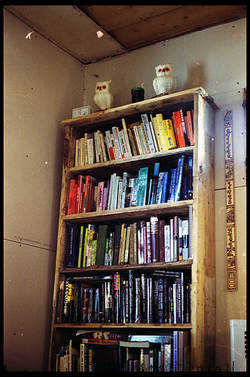
In my home, we have an open bookshelf policy. When I first told my husband that I stood firmly behind the open bookshelf policy, he had to ask me what I meant.
When I was younger, I went to a friend's home. On this visit I learned what a closed bookshelf policy was. Ultimately, a closed bookshelf policy implies that only a designated person or persons may remove and/or read the books on specific or all shelves. Of course, my friend did not label it a "closed bookshelf" the way that I have, they simply told me that I could not touch the books. I envisioned a grate blocking the shelf. When a child is told that they cannot touch a book, in my opinion and experience, they immediately associate this negative reprimand to the book or books themselves. With today’s unlimited amounts of internet, video games, and movies on demand, there is already a sizable amount of competition with books. I have decided to shrink this barrier in any way possible within my own home. Books are a vital and useful tool in shaping young minds. Not only do they provide information, instruction, and guidance but they also fuel imagination, inspire ideas, and cultivate wisdom. So, I have implemented an open bookshelf policy in my home. My children have known the joys of books since the first day I brought them home from the hospital. I have read to my children before they were born and have made sure that they have books they enjoy ever since. Both of my children paid their first visit to the library around the time they were two or three months old. I have made sure that my children have access to many books to read and browse and look through at all times. Yes, this means that I am constantly picking books up from the floor, the beds, the tables and chairs, but that is a small price to pay to know that my children are looking at books and trying to read them and inventing their own stories. That said, I often find them leafing through my books, pretending to read them. I have never told my children ‘no’ to leafing through my books. Of course, as with any parent, when they were younger, I have had to remind them “don’t tear the pages out” and “we don’t color in books.” Between the three of them, I have only “lost” three books, and one library book that we had to replace, to their mishandling them. Though these “loses” were disheartening, I would do it all over again. There is no reason to restrict their access to my shelves. Watching my kids fall in love with books is an amazing thing for me. Seeing them excited about a trip to the library, or browsing goodreads with me for new titles is the joy of introducing them to books. Even though I know that as they grow older they may lose some of that enthusiasm. But for now, seeing their faces light up, glowing while we read, knowing they can bring me a book and climb into my lap and I will read to them, sometimes the same book over and over again, is amazing. I do own exactly three books they are not allowed to handle. These books are old and rare, and one is in extremely rough condition already. I do not feel that eliminating these books violates my open bookshelf policy, however, because I do not keep them on the bookshelf but in a locked drawer and rarely handle them myself. Each reader and household has to decide for themselves whether or not to have an open bookshelf policy. I highly encourage households with children to consider the benefits of such a policy. I would love to hear about your bookshelf policies. 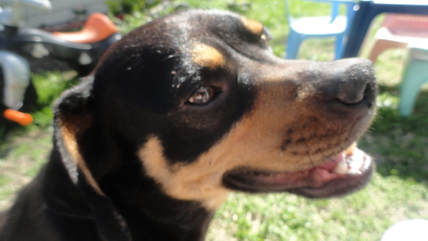 Buddy Buddy I have been exceedingly blessed to have some of the best animals come into my life over the years. Most of them found my family by chance. Right now I have one dog. He is one of the best dogs. He showed up at our house one day, a little puppy full of energy, running around our feet barking happily. At that time we had another dog who has, sadly, passed away. Jack, our current dog, showed up at our house in the fall. We were getting ready to spend the afternoon outside, putting coats on the kids and heading out the door. My husband, his cousin who was visiting, and my daughter headed outside while I finished getting my son in his coat. Suddenly there was a puppy running through my house and sniffing my son’s tennis shoes. Apparently, my daughter, thinking we were right behind her, had left the door open. The puppy followed us back outside, my husband and his cousin hadn’t even seen the pup. Since the puppy had a collar on, a little cat collar, we caught him and tried to figure out where he came from, but there were no tags. My husband took the puppy around to the neighbors’ to see if he belonged to anyone, but he didn’t. We put up notices online. No one answered, no one claimed him. By this time my children had fallen in love with the little guy. My dog, Buddy, wasn’t much of a kids’ dog, he was old and didn’t care to play much. He was happy Jack had showed up, it seemed, because now the kids had a pup who liked to play and didn’t mind when they would pet him the wrong way. Buddy was also a stray. One day when we came home from grocery shopping, he was hiding under our porch. We got the kids and the groceries inside before investigating further. Under our porch, plastered against the house was a little scared dog. He looked half- starved and was too afraid to come out. When my husband tried to lure him out with food he just whined and pressed himself closer to the house. Seeing the way he reacted to my husband, we decided I had better try while he was standing where the dog couldn’t see him. After thirty minutes trying to assure the dog that he was safe and we wouldn’t hurt him, he finally came to the front of the porch to try the food we were offering. When he finally came forward we could see that he really was starved, you could see every one of his ribs, and he had been hurt. We also suspected that he had been on his own for some time, since he was covered in ticks. It took three days of persuasion to get him out from under the porch, and he still didn’t like my husband. We had him checked out by the vet. He needed the ticks removed and a lot of food and water but he would be fine if taken care of. We were told that he had probably been abused, by a man, and that would explain why he acted the way that he did around my husband. We debated keeping him or not since we did not know what kind of dog he would be once he got better. In the end we decided to give him a chance since the pound was likely to put him down. We brought him home and began the long road to getting him healthy again. Buddy ended up being a great dog. He was obviously old and had no interest in fetching or playing but he was good with the kids and over time he warmed up to my husband too. Despite his small size, he was also an excellent watch dog. He always let me know when someone or some animal was near the house. Later the next summer we discovered that he was also a very good snake dog. One day, when the kids and I were getting ready to go play outside, Buddy went ballistic. I told the kids to wait inside while I went to find out what was wrong with him. He was barking frantically at something at the edge of our front yard. When I got closer I saw that he had cornered a black snake, common where we live and not poisonous. I got the shovel and he kept the snake cornered until I managed to cut its head off. If he hadn’t alerted me to the snake the kiddos might have been bitten. Once Jack, the puppy, had showed up, Buddy had begun acting older. We had no idea how old Buddy really was. We had only had him for a year and a half or so at this point. When we decided to keep Jack we had no idea how the two dogs would get along. But our worrying was for nothing. Buddy took right to Jack, as long as Jack wasn’t trying to chew on his ears. Buddy even taught Jack how to let us know when there was a snake around. One night after we had all gone to sleep, Buddy and Jack began barking like crazy on the back porch. My husband and I went to investigate. Thankfully we had the good sense to turn on the light and look out the door window before opening the door. Jack and Buddy had cornered a copper head, poisonous, next to the back door. Every time that the snake tried to move, they would go crazy again and back it into the corner. My husband put his snake guards on and left out the front door. Those dogs didn’t budge until my husband had killed and disposed of the snake. Unfortunately we lost Buddy about ten months ago. He was rather old when we found him so it didn’t come as a surprise. We still have Jack, he has continued to be a wonderful dog for the kids. He is also a wonderful guard dog despite his size. For two dogs whose previous owners couldn’t appreciate them, they have been the best dogs in the world. |
Currently ReadingWhere the Crawdads Sing by Delia OwensAmazon Associates ProgramImages on these pages should lead you to Amazon links to find the books. "We are a participant in the Amazon Services LLC Associates Program, an affiliate advertising program designed to provide a means for us to earn fees by linking to Amazon.com and affiliated sites.”
Archives
March 2024
Categories
All
|

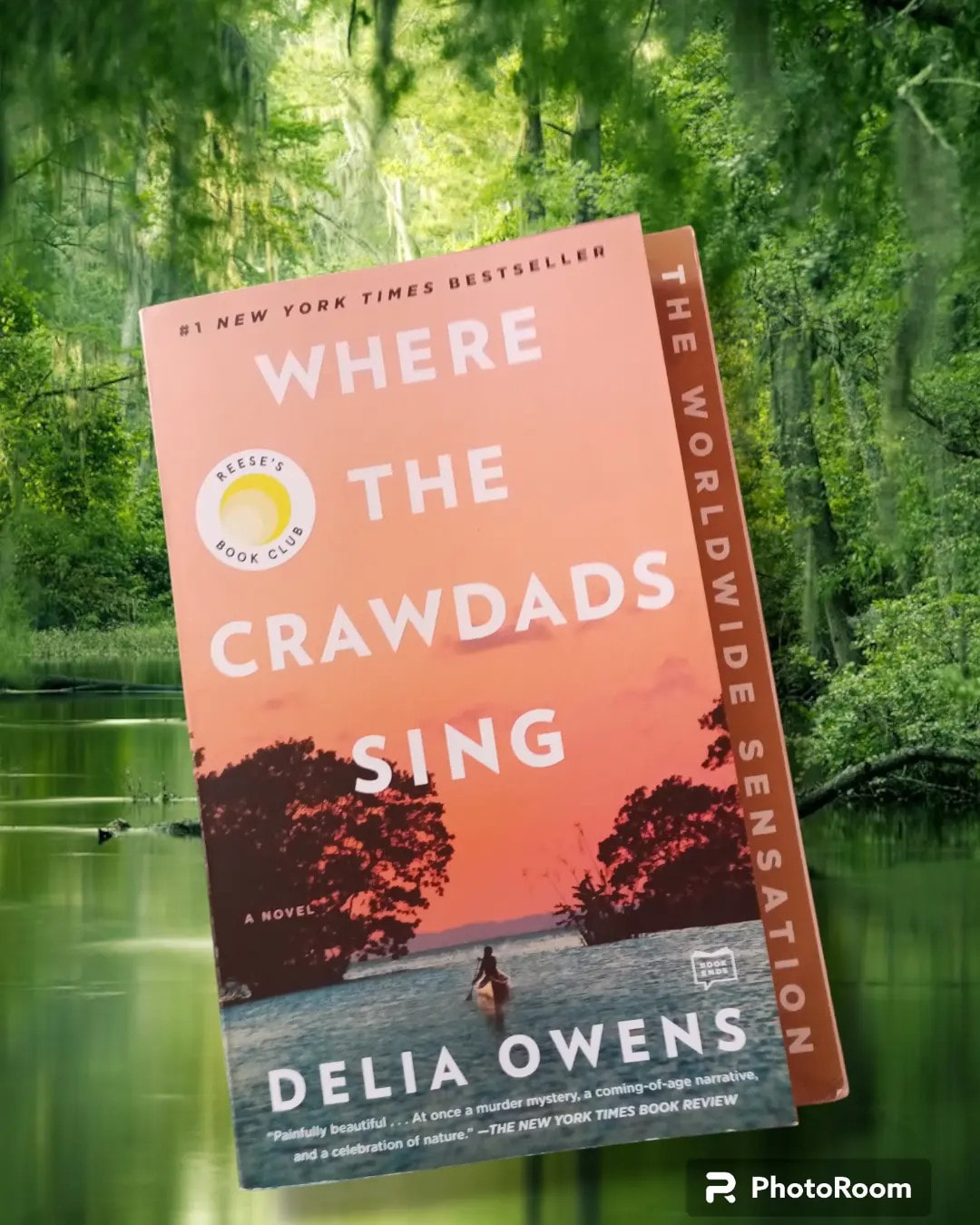
 RSS Feed
RSS Feed
